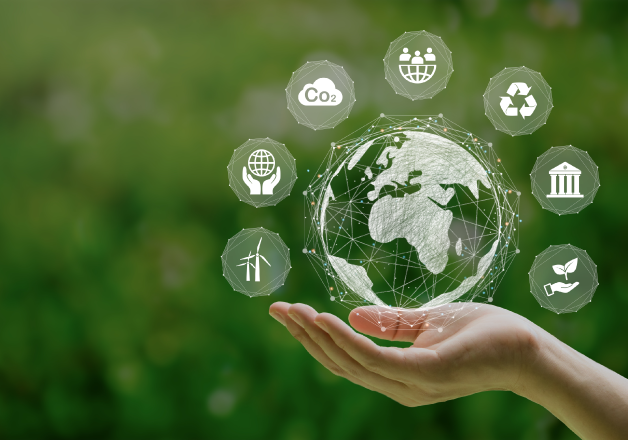
Understanding the concept of “Sustainability: A Strategy for Businesses towards sustainable development.
The world is in the grip of severe environmental crises, with their impact felt across the globe. From climate issues to pollution, these problems are a result of various factors, including the escalating demands of our growing population. This is why sustainability has become a pressing concern, as it encompasses economic and social issues such as poverty, social inequality, and human rights violations, all of which have far-reaching negative consequences.
What is the concept of sustainability?
Sustainability generally means the ability to maintain or support a particular process or another’s persistence. In the business context, however, business sustainability is a concept focusing on protecting, improving, or conserving the world’s natural or physical resources from exhaustion to maintain those resources for later generations and create a balance between economic growth, environmental care, and good well-being for society.

How does sustainability work?
Sustainability is a concept that calls for agencies and organizations to create policies that consider future generations’ consequences, emphasizing future impacts and significant changes to business operations, ecosystems, and the economy at large.
With the world grappling with climate change, biodiversity loss, and escalating pollution, the need for sustainability has never been more apparent. The global community is increasingly focusing on adopting sustainable practices, policies, and concepts, particularly through the operation of sustainable businesses and the investment in green technology and environmentally friendly enterprises.
The three pillars of sustainability, a fundamental concept in the realm of environmental responsibility, are crucial for understanding and implementing sustainable practices in any organization.
A key to sustainability based on the sustainability concept is to consider the impacts of policies or business practice guidelines through three pillars, namely, environment, economy, and society, to demonstrate an organization’s social responsibility. Accordingly, the organization will consider positive and sustainable outcomes for the people of the world in addition to profits from decision-making.
- Environmental Sustainability
Environmental sustainability focuses on environmental conservation because it is vital to the sustainability of organizations of every size and business category. The focus can be started by evaluating the offices and facilities internal to the organizations by using pretty straightforward methods to become more environmentally friendly, including recycling paper and other office supplies, procuring recyclable and environmentally-friendly materials, using LEDs to reduce energy consumption, and campaigning against unnecessary trips to maintain the ecological integrity of ecosystems and the environment of the world to ensure balance, especially in terms of natural resources such as air, water, soil, forests and animals, which humans are continuously using.
- Economic Sustainability
Economic sustainability, another pillar of the sustainability concept, is not just about reducing costs and waste. It’s about promoting economic growth while minimizing environmental and social impacts. By adopting measures such as energy reduction and waste management, companies can attract customers, enhance their brand image, and reduce their dependence on limited natural resources.
- Social Sustainability
For social sustainability, the three interconnected pillars of sustainability, namely, environment, economy, and society, can be found through economic activities in different environments. The goal of social sustainability is to promote the unity and security of people living in society to ensure that every person can have their basic human needs met by having sufficient resources for everyone in the community and having a robust social system with good health and happiness along with respect for human rights such as on the use of labor, healthcare, and equality to create a sustainable society.

Creating a Sustainable Future by Using the Sustainability Concept
The step toward sustainability is a significant challenge for the world’s population. Beyond conserving the world’s nature and resources, the principles and promotion of sustainable changes can also be integrated and implemented with daily sustainability guidelines. However, doing so requires the ongoing and consistent collaboration of the business sector, government agencies, non-profit organizations, and individuals. Learning about sustainability can create positive changes in our world.
